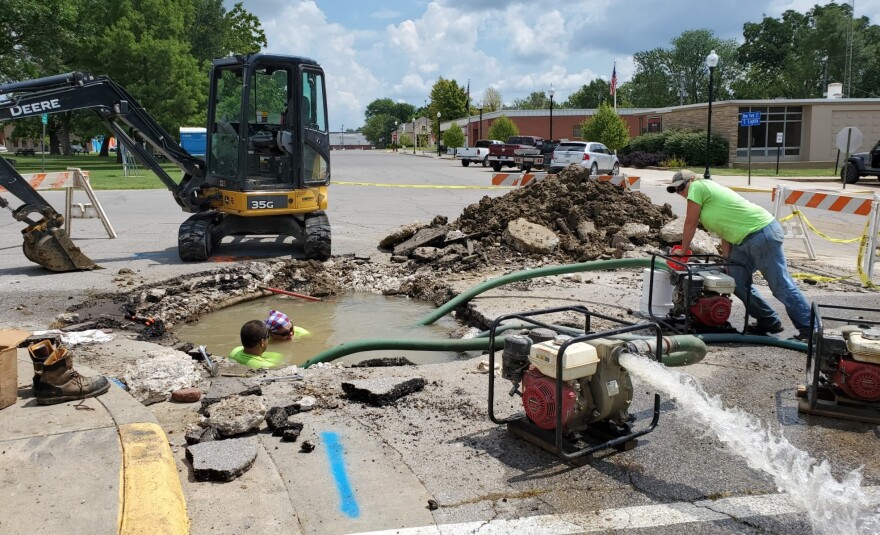The U.S. Department of Agriculture is providing more than $49 million for water and wastewater infrastructure repairs and upgrades in four towns and one county in rural Kansas.
“Our rural communities in Kansas are in desperate need of investment and infrastructure. Water and sewer is no exception to that,” said Christy Davis, the state director of USDA Rural Development for Kansas.
The cities of Girard, Humboldt, Mankato and Perry, as well as Neosho County will receive the funding. The money comes from the USDA’s Water and Waste Disposal Loan & Grant Program.
Aging infrastructure is an issue across the country — the Environmental Protection Agency estimates that the country will need to spend $744 billion on water infrastructure in the next decade. It’s an especially difficult issue for rural communities that often struggle to come up with necessary funds.
“A lot of it just boils down to the fact that by definition rural areas have fewer people, but a lot of the costs are still the same,” said Tom Mueller, a rural sociologist at the University of Kansas Medical Center.
He said that programs like this exist to help address the shortfall. A study conducted by Mueller and published earlier this year found that investments in water infrastructure were associated with decreases in poverty and unemployment and increases in per capita income. The effect was stronger in counties with larger Black populations.
Yet the Water and Waste Disposal Loan and Grant Program doesn’t cover private drinking wells, which many residents in rural areas rely on for their drinking water, including about 150,000 people in Kansas as of 2020. Private well water is not regulated or funded by the federal government, therefore those residents have to maintain their wells on their own.
“We don't have a good understanding of the quality of well water nationwide,” said Mueller. “The few studies that have been able to be done are pretty old at this point, and they suggest that a lot of it's quite in rough shape.”
The Water and Waste Disposal Loan & Grant Program has existed since the Water Facilities Act of 1937, but this year funds coming from the Bipartisan Infrastructure Law and the Inflation Reduction Act have enabled USDA Rural Development to give out more grant money. Three of the recipients, Neosho County, and the cities of Girard and Humboldt will all receive grants, as well as loans.
“For many of these communities, it's really hard to justify taking on debt,” said Davis. “It's important that we as an organization realize that we need to make this funding accessible.”

Cole Herder, the city administrator of Humboldt, said that taking on debt does raise concerns about how it's going to affect the next generation.
“It's a difficult thing. We're looking at loans that are 40 years to pay off,” he said. “I'll be long gone before then.”
He said water rates are already going to nearly double to pay off the loan, so the grant keeps those rates from increasing even more. However, he is still seeking additional grants to bring down the cost further. But Herder said it’s difficult for rural towns to find the staff, resources and time to seek out and apply for this funding.
“We have very limited staff and we wear a lot of hats, and it's not our full-time job to be looking for grants,” he said.
Communities can reach out to USDA Rural Development to receive help through the application process, though the office had more capacity to do so in the past, according to Davis.
“It's really important to me, and I think to most folks in government in Kansas, that we make sure these programs are accessible to the communities that need it most,” she said.
However, these programs still only meet a fraction of the needed investment for aging infrastructure, said Mueller.
“These big numbers, $49 million, that sounds like a lot, but then you look,” he said. “Okay, it's five projects. There's a lot more than five towns in rural Kansas, and they all have needs.”




